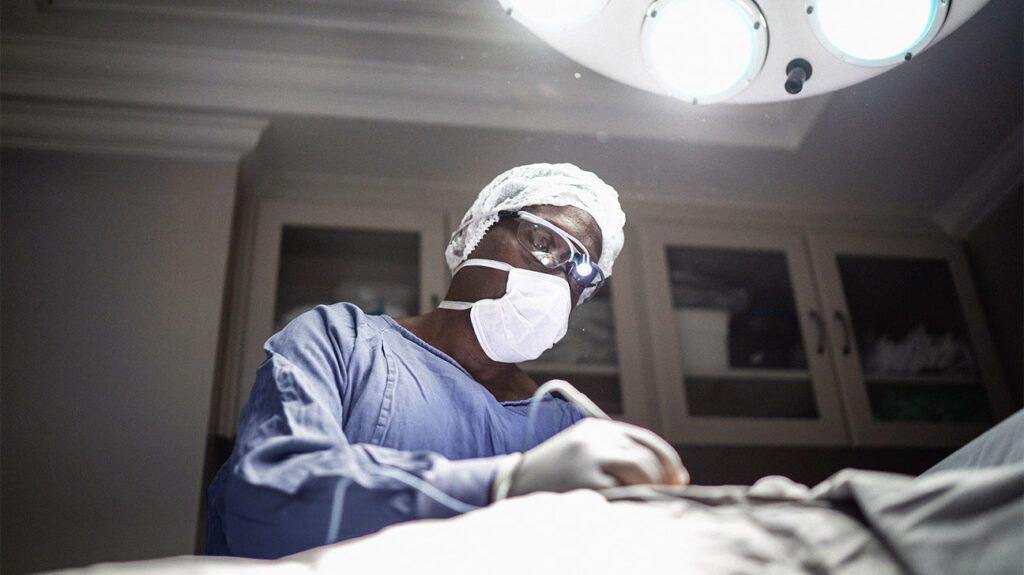Hidradenitis suppurativa (HS) is an inflammatory skin condition that can cause painful lumps underneath the skin. Plastic surgery, such as skin grafts and skin flaps, may help treat the condition.
Without treatment, HS can lead to recurring painful abscesses and scars, which can cause pus-filled tunnels known as sinus tracts to develop underneath the skin.
This article discusses how plastic surgery can help HS, what a person can expect from the surgery, what happens during the procedure, and more.

Plastic surgery
An excision describes the surgical procedure a surgeon may use to remove the tissue and skin.
A skin graft can then reconstruct the area by replacing it with healthy tissue free from abscesses and infection. A skin graft relies upon the growth of new blood vessels once a surgeon has attached it.
Skin flap surgery following HS excision is similar to a skin graft. However, skin flap surgery allows the blood supply to stay intact.
There is currently
In addition to skin grafts and skin flaps, other types of surgery for HS
- Incision and drainage: A surgeon will make an incision into the HS cysts and drain them to relieve pain and swelling.
- Deroofing: A less invasive technique that involves removing the route of the HS sinus tracts and removing any pus.
- Excision: A type of plastic surgery for HS which is typically invasive. It involves removing the entire area of HS tissue and skin.
Learn more about surgery for HS.
Doctors
The most severe stage of HS is stage 3. It affects
A person with stage 3 HS may have multiple sinus tracts that interconnect and multiple painful abscesses that are not responding to other treatments.
A person’s doctor can discuss anything specific they may need to do before the surgery.
A doctor
During plastic surgery for HS, a surgeon will sterilize and prepare the areas of the skin. They will then make an incision into the skin and remove the affected areas.
To perform a skin graft, a surgeon
The surgeon will then stitch, staple, or glue the healthy tissue at the grafted site and cover the donor site with a dressing.
To perform skin flap surgery, a surgeon will partially remove the healthy tissue from the donor site before repositioning and stitching it over the wound site. A surgeon may then use a microscope to reattach the blood vessels at the new site.
Following plastic surgery for HS, people can expect a degree of wound care to prevent infection. A doctor may prescribe oral and topical antibiotics as a preventive measure.
A person can expect a full recovery in
Plastic surgery may be able to remove all the affected tissue, therefore relieving symptoms of HS.
However, a 2022 study suggests that
A person’s doctor can advise ways to help reduce the risk of HS returning.
Some
According to the International Association of Hidradenitis Suppurativa Network, a person should ensure they have the correct coverage as some packages may not cover HS surgery.
Hidradenitis suppurativa (HS) is an inflammatory skin condition that can cause painful lumps underneath the skin. A person may require surgery if they have severe HS.
Plastic surgery for HS involves removing the affected tissue and reconstructing the area. Possible procedures include skin graft and skin flap surgery.
It can take up to 10 weeks to recover after plastic surgery for HS. As there is a risk of recurrence, a person’s doctor can advise them on ways to help reduce this risk.
